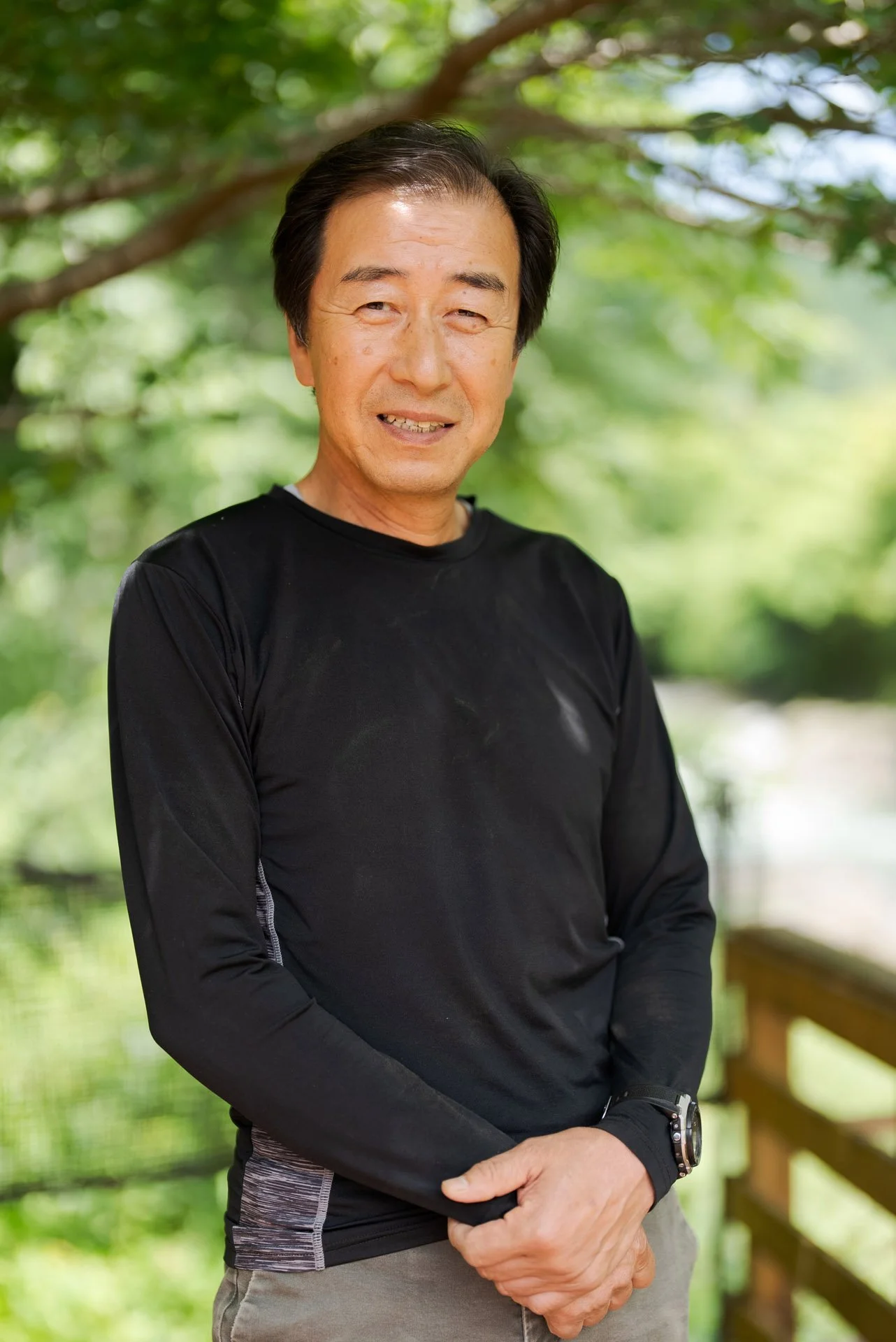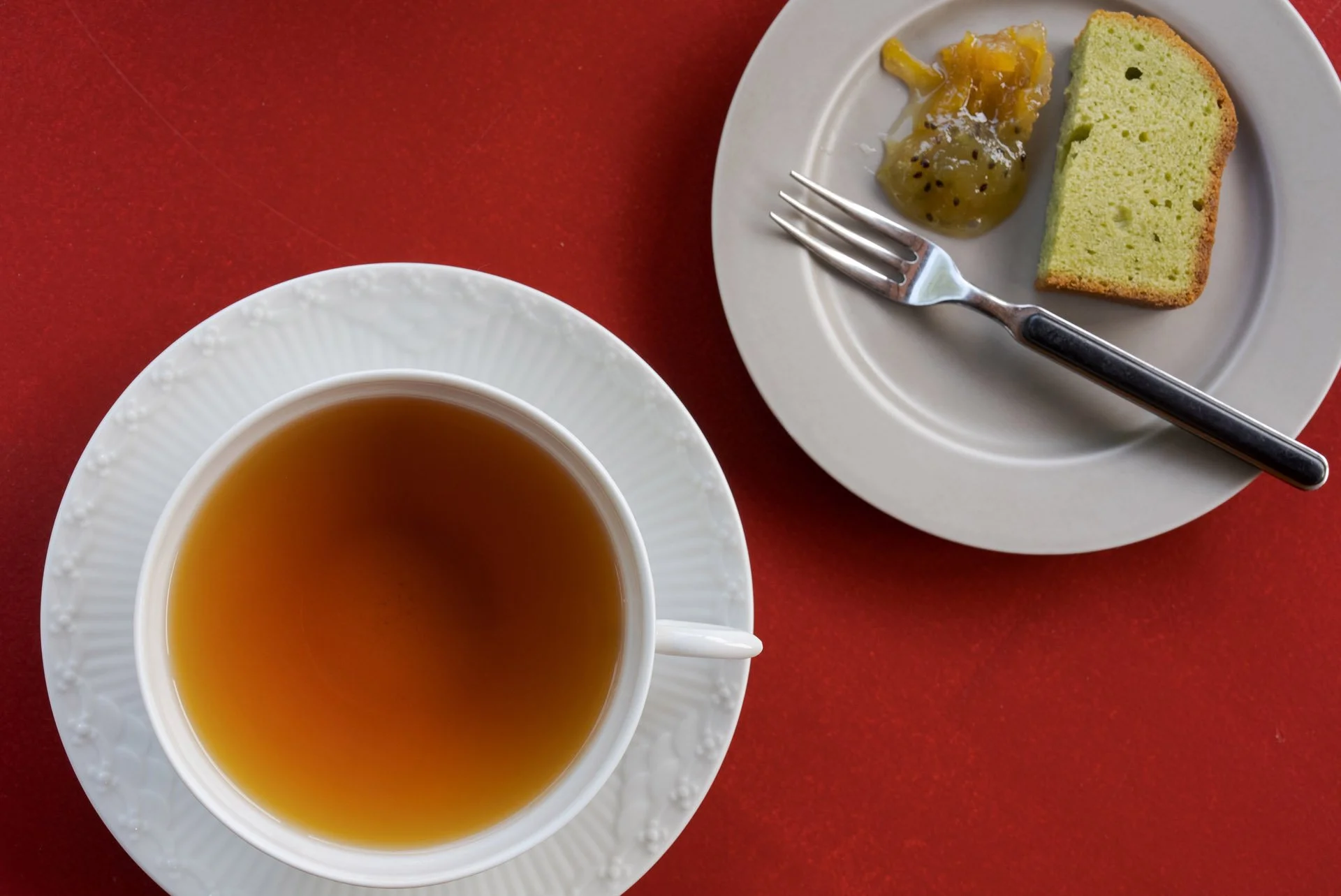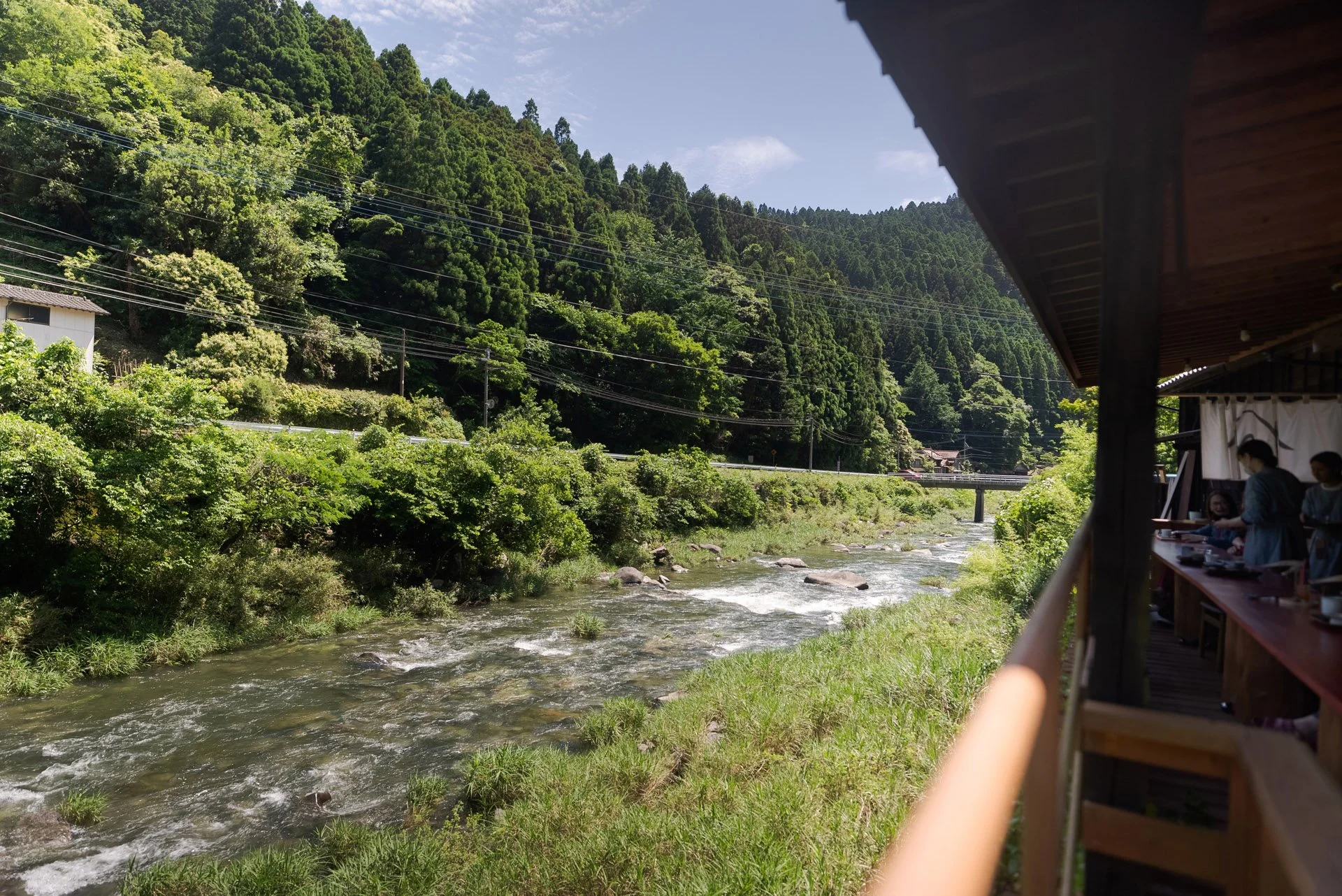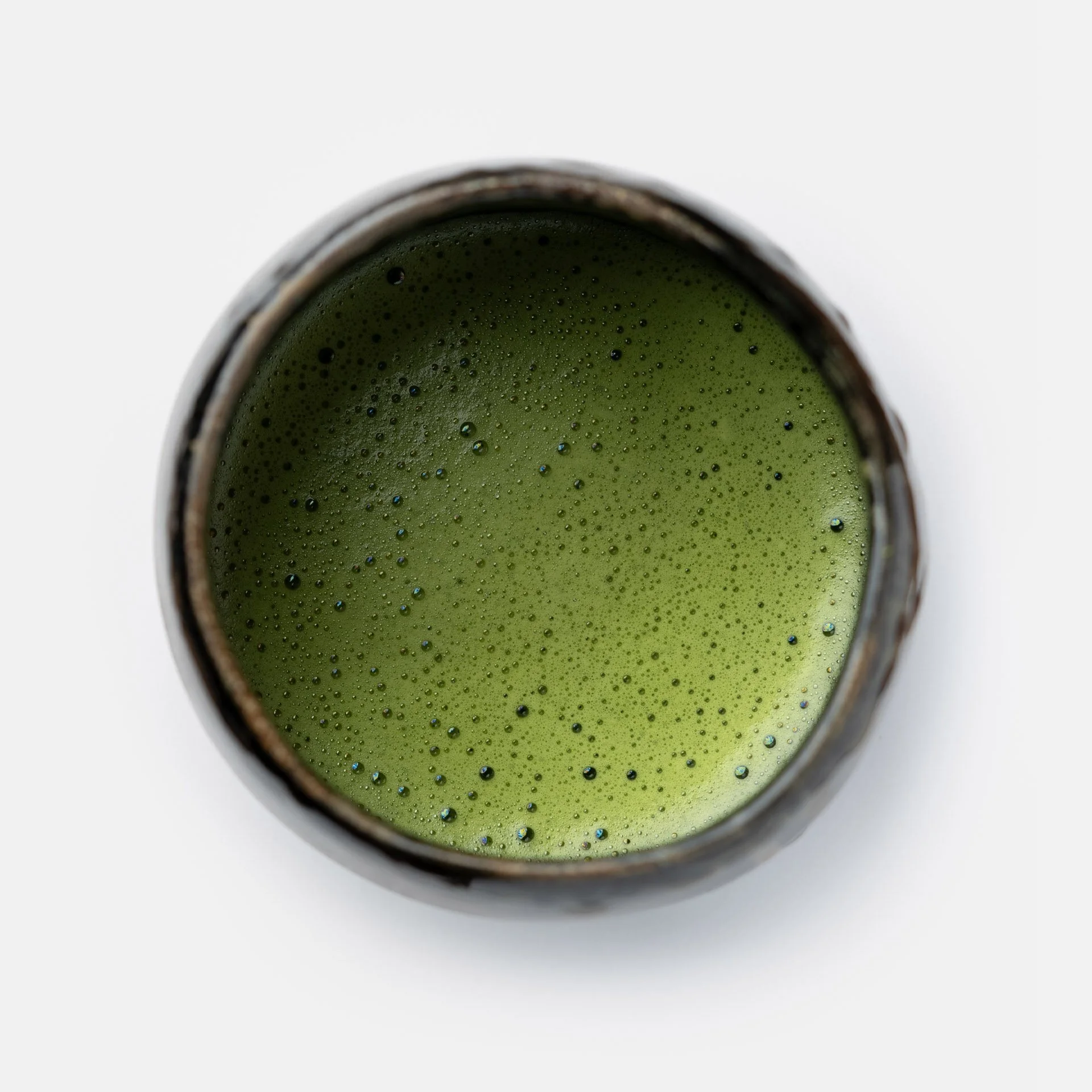MMC 08/23: Harashimaさん Sayamakaori (さやまかおり) Yabemura Matcha
Matcha Mill Club is our monthly Matcha membership, where we stone-mill a new single-cultivar Matcha and ship it out within 24 hours of milling every month. This article details the Matcha we shipped for August 2023!
Dear reader,
This month we’ll be tasting a Sayamakaori cultivar from a high-altitude farm located in Fukuoka prefecture.
Harashimaさん
A 3rd generation farmer, whose field sits atop Yabemura. Known for its high elevation (600m+) and pure, white snow. The far is located an hour or two outside of Hoshino-mura. The brisk, assertiveness of the cold can be tasted in the tea.
Harashimaさん himself is a 3rd generational farmer. When we met, he explained to me that he moved to Shizuoka to work at the tea farms to better learn the craft. As you may know, Shizuoka is the largest tea-producing region in Japan – producing 10X the material as Kyoto prefecture.
Yame, Crafts
Yame, within Fukuoka prefecture, is one of my favorite tea-producing regions in the country. Being a traditional city, Yame has many local crafts such as tea, and Washi (paper-making.)
Harashimaさん believes that Yame has such excellent tea because the city of Yame embraces traditional workmanship – not to mention good quality clay that’s fed by the Yame river.
Koucha (こうちゃ)
Harashimaさん’s farm produces Tencha (ground Matcha), green tea – but also Koucha, or red tea.
This is surprising, as Japan today primarily produces green tea. Though I have noticed that more farmers I’ve met in the region have become interested in red tea lately.
Still, Harashimaさん is a master in his craft, winning multiple awards for his red tea. I’ve sampled much of it and found it pleasant and warming. In fact, you can see me tasting Harashimaさん’s red tea in a recent video on the Ooika YouTube channel.
Harashimaさん went to Shizuoka to learn how to make Red Tea. Originally he wanted to make Wu Long (Oolong) – again, very surprising! However being that Wu Long is more complicated than Red Tea to make, he ultimately decided to delay his Wu Long-making vision.
Cultural Note: Red tea from Japan has two names: Wakoucha and Koucha. Harashimaさん expressed to me that the better term domestically is “Koucha”, and not “Wakoucha.”
Koucha literally means Red Tea, while the Wa in Wakoucha means “Japan.” Wakoucha thus literally translates to Japanese Red Tea.
There is logic in the preference between Japanese producers preferring “Koucha” over “Wakoucha”, but to be a little vulnerable: I don’t yet understand the reason – yet. This will be a topic I follow up with Harashimaさん next season when we meet.
Sayamakaori (さやまかおり)
Sayamakaori (さやまかおり) is a cold-resistant cultivar, ideal for northern or high-elevation growing regions. As the name suggests, the cultivar is from Sayama (a very northern growing region, outside of Tokyo.)
Sayama is the growing region, and Kaori means “aroma.” Thus, this tea is the “aroma of Sayama.” Poetic!
Catechins in Sayamakaori
Interestingly, this cultivar has excess Catechin polyphenols. Catechins are the anti-oxidant compound in tea that taste astringent and tannic. Though, it's worth noting that tea actually has no actual tannins.
What makes this particularly interesting is high levels of Catechins make Sayamakaori a suitable cultivar for producing Koucha. Red tea loves catechins, and here’s why:
When green tea leaves are fermented into red tea, the catechins enzymatically form theaflavins and thearubigins. These are the compounds that make red tea red - and also contribute to the flavor and aroma of red tea.
Matcha, Catechins, and L-Theanine
Catechins in tea are responsible for the astringent, tannic taste. Remember this is an important element part of tea! You want a balance that comes from the freshness of astringency.
So where does the famous sweetness and savory come from? The answer is L-Theanine.
Tug of War
We can think of Catechins and L-Theanine on the opposite ends of a tug-of-war. They are always in battle pulling the Matcha to the astringent side of the spectrum or the savory.
Some cultivars will naturally have more people “pulling” on the Catechin side of the rope (such as Sayamakaroi Cultivar), while other cultivars (such as Asahi) may have metaphorically more “pulling” on the L-Theanine/savory side.
Tea producers can strengthen or weaken either tea, to manipulate the final balance of astringency (catechin) / savoriness (L-Theanine) using technics such as fertilization and shading.
Ample use of fertilizers will result in more L-Theanine in the final tea and fewer catechins. This is why tea meant for Koucha (red tea) has less fertilizer used.
Shading the tea plant will decrease the synthesis of catechins and encourage more L-Theanine production. Thus, a final tea that’s more savory and less astringent.
Back to this month’s Matcha
We might be getting a bit far from talking about this month’s Matcha. Though I wanted to provide some background as to why this Matcha has the taste it does.
And why a farmer (especially one that is high elevation, in a frosted environment, who produces red tea) would choose this cultivar.
I find all this terribly interesting!
As alluded to throughout the article, expect this month’s matcha to lean more towards the Catechin end of the scale - meaning more astringency, freshness, and assertiveness.
The harsh notes of the Sayamakaori cultivar are present, but subdued, due to the shading process (known as Kabuse.) Let’s taste it!
Tasting Notes
Dry aroma reminiscent of egg-custard pastry made noticeably floral when wet. Subdued in color, natural rather than electric green. Lightly tannic but with an assertive level of herbal astringency.
This Matcha is exciting to examine the difference between the tactile sensation of catechin (tannic) and the flavor experience of catechins (astringency.) Young rose buds, not quite in bloom, mineralized spring water, and light-bodied.
Effortless, yet bold. Matcha focuses on the tip of the tongue and gradually dissolves as it moves backward to the base of the tongue.
Share your Experience
We’d really love to hear about your experience tasting this month’s Matcha. Please feel free to share it on social media and tag us!
Or simply reply back via email and give us your thoughts. As always, you can follow Ooika on Instagram at @ooika.co or on YouTube here.
Sincerely,
Marc
Ooika’s Miller






